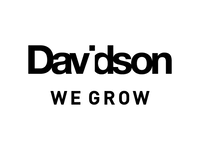
Google “customer-centric brands” and you get pages of results. Business schools teach it, and major brands espouse it.
By definition, being a customer-centric brand is going to mean different things in different sectors, but what does it mean for FMCG brands in particular? That’s easy you say; choose a snappy brand name and packaging that infers health and goodness, have some exciting and exotic flavours. Oh, and make sure you get some social media influencers on board.
Okay, so maybe it takes a little more than that. The reality is that because today’s consumers are both sophisticated and multi-dimensional, understanding them is not as simple as an age/gender segmentation and a single TVC.
We reviewed over 200 separate studies and reports to identify the seven key drivers of consumer behaviour that define successful modern-day FMCG brands. These are the things that actually impact what people buy in the supermarket and whether they will repurchase it.
The seven consumer drivers are the key to your current and future customers. Every major recent development in the FMCG market can be linked to them, and they will underpin the key trends going forward.
Price will always matter, but the recent price wars have largely abated, and even Marketing 101 teaches that price is not a USP.
The good news is that the seven drivers we have identified are outside of price. The best news is that there are very effective ways in which you can use these drivers to stay ahead of your competitors.
While the seven drivers are fundamental to consumer’s relationship with brands, the ways in which shoppers perceive and integrate them is constantly evolving. And Covid-19 has accelerated the pace of change as it’s led to 46% of Australian grocery shoppers committing to new brands. So now is the time to start!
Here’s a taster of four of these drivers, we’ll introduce the remaining three in our Report.
- You have to fit into my life – ‘cos it’s stressful enough already
Eighteen minutes to plan a family meal and another 39 minutes to get it on the table, it’s a mad rush. It can also be pretty stressful trying to cook from scratch (one in two consumers), and with fresh ingredients (the ambition of two in three cooks).
Meal kits? They’re taking off slowly, but many consumers can’t see the value equation when they still have to cook the key components.
Not to mention that most feel the twin challenges of making healthy meals that could also look like the ones on MasterChef.
Today’s consumer is taking control of their own food intake, and they expect brands to help them.
Where does your brand fit into their life?
2. I’m not like everyone else – so forget mass marketing
One in two households are trying to prepare meals to address particular requirements. The common ones are low calorie (23 per cent), vegetarian (18 per cent), gluten-free (9 per cent) or diabetes-friendly (10 per cent), but there are heaps more.
Then there is the popular (44 per cent) “food as medicine” approach that incorporates specific ingredients that are believed to help with everything from your thinking to your emotions to your physical health. And 39 per cent take manufactured supplements of some kind.
With every customer potentially looking for something different from your brand, it’s imperative to be able to communicate your USP in as wide a range of formats and messaging as possible.
How many different ways can you talk about your brand?
3. I am going to be healthy – help me or lose me
Unfortunately for FMCG brands, many consumers (59 per cent) just don’t believe that they can ever be as healthy as natural products. And worse, 43 per cent believe that FMCG brands have become progressively less healthy over time.
In the pursuit of healthy food and beverages, 70 per cent dabble in buying organic foods, but 95 per cent find it too expensive to do it all the time. Even though only 12 per cent are committed vegetarian or vegan eaters, Australia has the world’s fastest growth rate.
No matter the category, if you can’t promote some health aspect to your brand, you’ll lose your customers to those that do. Get on that bandwagon before it passes you by.
4. You need to keep it simple – ‘cos that’s the essence of healthy food
Australia already has strict food labelling requirements, but consumers want more than just lists and percentages. Four in five want a very short list of ingredients, and a similar proportion wants to be able to recognise the key ones.
Every day, consumers find new grounds on which to evaluate ingredients lists with minimally processed and non-GMO becoming increasingly popular.
A key goal of your NPD must be to continually review your formulations. Focus on having the minimum number of ingredients, making them all ones that sound like actual food products (instead of chemicals) and if at all possible, source them from Australia.
Making it happen
In today’s fast-moving consumer goods sector, change is constant and often stepwise. On the positive side, the seven drivers do provide a roadmap forward, and consumers are open to trying new brands or new formulations. The more drivers you can support, the more engaged they will be with your brand.
In case you were wondering, the other three drivers we’ll cover in our Report – The Future of FMCG:
- I love surprises – I want to spend my budget on new tastes and ingredients.
- My impact matters – I can eat and make a better world.
- You have to do better – share my values, and you can share my life.
Stay tuned and become central and essential to your customers.
Download the future of FMCG Report and learn how to leverage the Seven Drivers for success in 2021 and beyond.


